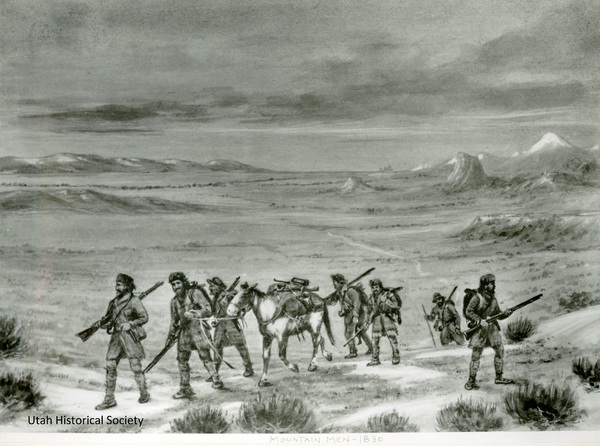Dublin Core
Title
Description
In the early nineteenth century, Americans viewed the Interior West as a storehouse of natural resources. For the fur trade, the region became a new source of beaver pelts that could be made into fashionable hats for urban consumers. Trappers who worked for fur companies are known as mountain men, and they embody the rugged masculinity that many still associate with the American West. But the mythology of the mountain man actually obscures the real significance of these trappers.
In 1822, William Ashley started the Rocky Mountain Fur Company in St. Louis by advertising for one hundred “enterprising young men.” Notable explorers such as Jedediah Smith and Jim Bridger were among those who signed up. Within a few years of its founding, the Rocky Mountain Fur Company charted a course along the Bear River into what is now Cache Valley in northern Utah. In fact, three of the annual mountain man rendezvous took place in the Cache and Bear Lake valleys. These trade gatherings offered trappers an opportunity to exchange their pelts for needed goods and welcome camaraderie.
Trapping was difficult and lonely. Getting to the mountainous waterways where beaver lived – and then trapping them in springtime – required that mountain men survive extreme conditions in the wilderness. To do so, they learned from the people who knew the land best, namely Shoshone and Ute people. Indigenous women who married these men often performed important work as liaisons between the trappers and other communities. The fur trade existed at the margins of hotly contested territory in the 1820s and '30s. French-Canadian and British companies used fur trappers to stake claims on land and waterways, altering Native American boundaries in the process.
By 1840, trappers had decimated beaver populations and saturated the market with pelts. But the routes and scouting reports from these traders and explorers guided an influx of settlers in the following decades, including the Mormons who settled the Salt Lake Valley in 1847. Like the mountain men themselves, the fur trade in the Intermountain West had a fleeting presence but a long-lasting legacy.
Creator
Source
_______________
See Thomas G. Alexander, “Explorers, Entrepreneurs, and Emigrants” in Utah, The Right Place: The Official Centenary History (Salt Lake City: Gibbs Smith, 1996); Sondra Jones, “Americans Among the Utes: Trade, Trapping, and Trails” in Being and Becoming Ute (Salt Lake City: University of Utah Press, 2019).

